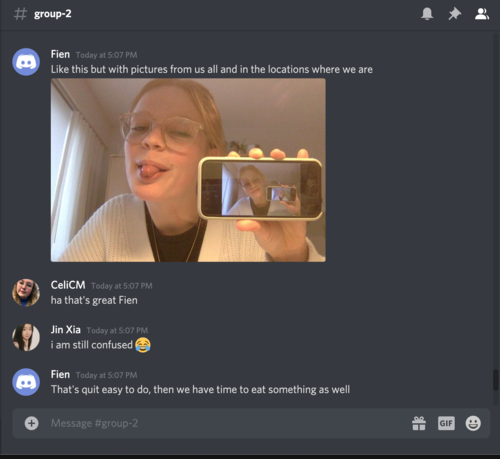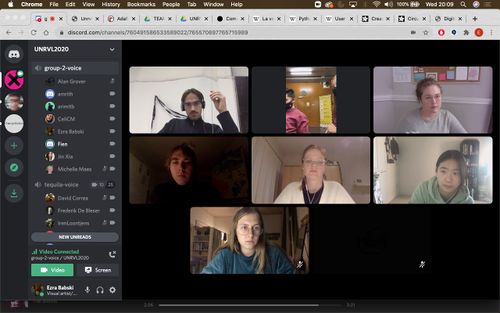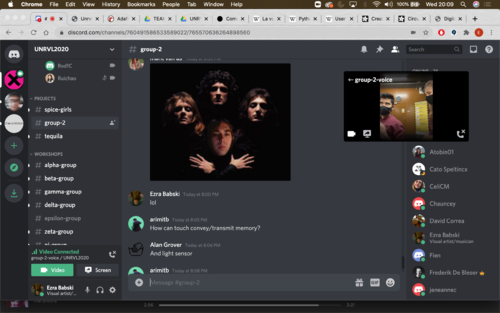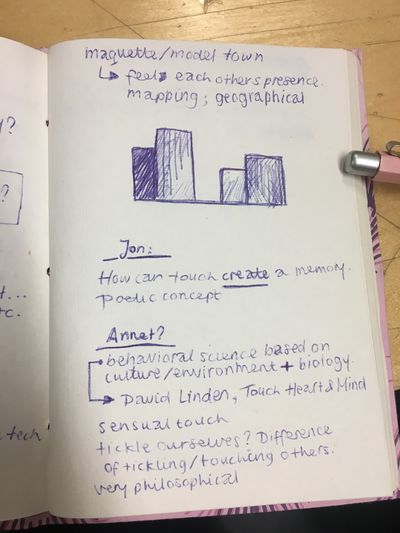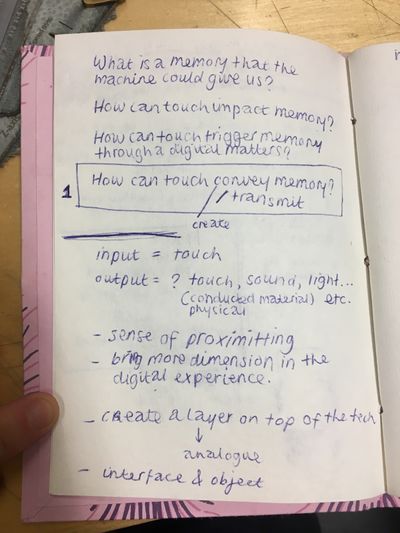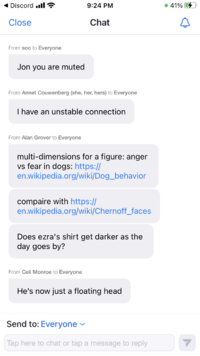Difference between revisions of "UNRVL9-Project2"
EzraBabski (talk | contribs) |
EzraBabski (talk | contribs) |
||
| Line 62: | Line 62: | ||
<br/> | <br/> | ||
<br/>For our UNRVL 2020 project, we have set about accomplishing just that, in the interest of encouraging the development of virtual rituals and facilitating spontaneous interactions across virtual platforms. Our approach is twofold: one the one hand, to design a device that represents activity in online chatrooms in an analogue way (brightness-graduated pulses of Neopixels on the CP/Bluefruit represent the degree of participation of individual members of the chat), allowing “offline” users to have an ambient awareness of conversations amidst friends from afar. (Bright lights indicate a lively exchange, and signal perhaps the opportunity to jump in and discover what all the fuss is about.) On the other hand, we hope ourselves to create the platform on which these signals are based. The effectiveness of this social platform—tentatively called Room—hinges on a custom-built spatialized audio-visual interface that simulates sensations of nearness and distance in virtual space. | <br/>For our UNRVL 2020 project, we have set about accomplishing just that, in the interest of encouraging the development of virtual rituals and facilitating spontaneous interactions across virtual platforms. Our approach is twofold: one the one hand, to design a device that represents activity in online chatrooms in an analogue way (brightness-graduated pulses of Neopixels on the CP/Bluefruit represent the degree of participation of individual members of the chat), allowing “offline” users to have an ambient awareness of conversations amidst friends from afar. (Bright lights indicate a lively exchange, and signal perhaps the opportunity to jump in and discover what all the fuss is about.) On the other hand, we hope ourselves to create the platform on which these signals are based. The effectiveness of this social platform—tentatively called Room—hinges on a custom-built spatialized audio-visual interface that simulates sensations of nearness and distance in virtual space. | ||
| + | <br/> | ||
<br/> | <br/> | ||
</span> | </span> | ||
Revision as of 08:40, 16 October 2020
Group 2
Fluidity of Presence: Ways of Being Together in the Digital Age
Can we communicate the complex experience of presence and absence, nearness and distance that is a feature of embodied existence (in short, the spectrum of "being together") by designing hybrid analogue/digital technologies that eschew stale binaries of online/offline connection?
Project Description
|
Digital presence takes many forms. Regardless of whether we are “plugged in,” our digital footprint manifests in the digital ecosystem as a constantly expanding network of traces, data artefacts, biometric residues and transaction histories. Viewed from this angle, the conventional, binary distinction between online/offline states ceases to make sense; indeed, given the extent of our current dependence on digital technology, almost all of us are always digitally present, if only in a hyperfragmented way. It is more accurate, therefore, to insist on the existence of a spectrum of "online" states.
|
Research
|
[...] |
Documentation
|
Monday Tuesday Wednesday Thursday |
Result
|
[...] |
